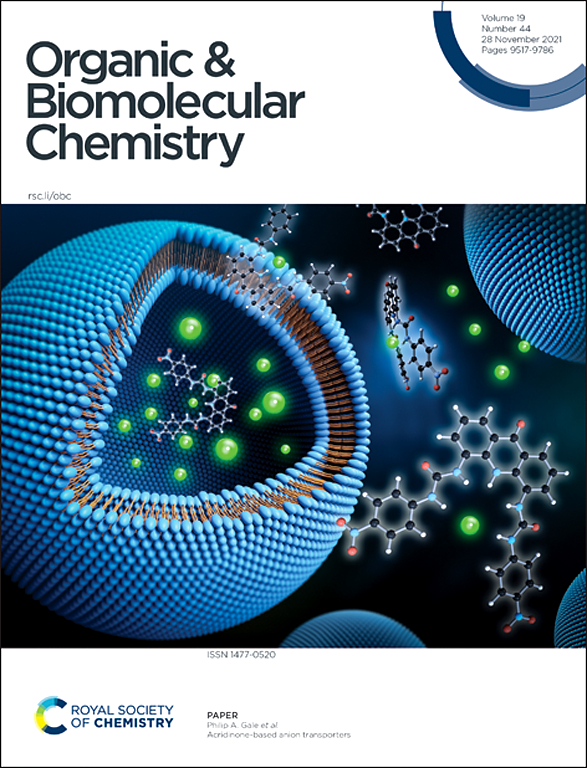合成金属结合氨基酸。
IF 2.7
3区 化学
Q1 CHEMISTRY, ORGANIC
引用次数: 0
摘要
氨基酸残基与金属结合的能力支撑着金属蛋白在生物体内进行大量关键过程的功能,以及在催化、传感和药物化学领域的非自然应用。获取金属结合肽的能力在很大程度上取决于生成适当构建模块的能力。本综述概述了最近开发的合成金属结合非蛋白源氨基酸的策略。本文介绍了获取这些氨基酸以及将其合成肽的化学方法。本文章由计算机程序翻译,如有差异,请以英文原文为准。

Synthesis of metal-binding amino acids
The ability for amino acid residues to bind metals underpins the functions of metalloproteins to conduct a plethora of critical processes in living organisms as well as unnatural applications in the fields of catalysis, sensing and medicinal chemistry. The capability to access metal-binding peptides heavily relies on the ability to generate appropriate building blocks. This review outlines recently developed strategies for the synthesis of metal binding non-proteinogenic amino acids. The chemistries to access, as well as to incorporate these amino acids into peptides is presented herein.
求助全文
通过发布文献求助,成功后即可免费获取论文全文。
去求助
来源期刊

Organic & Biomolecular Chemistry
化学-有机化学
CiteScore
5.50
自引率
9.40%
发文量
1056
审稿时长
1.3 months
期刊介绍:
Organic & Biomolecular Chemistry is an international journal using integrated research in chemistry-organic chemistry. Founded in 2003 by the Royal Society of Chemistry, the journal is published in Semimonthly issues and has been indexed by SCIE, a leading international database. The journal focuses on the key research and cutting-edge progress in the field of chemistry-organic chemistry, publishes and reports the research results in this field in a timely manner, and is committed to becoming a window and platform for rapid academic exchanges among peers in this field. The journal's impact factor in 2023 is 2.9, and its CiteScore is 5.5.
 求助内容:
求助内容: 应助结果提醒方式:
应助结果提醒方式:


